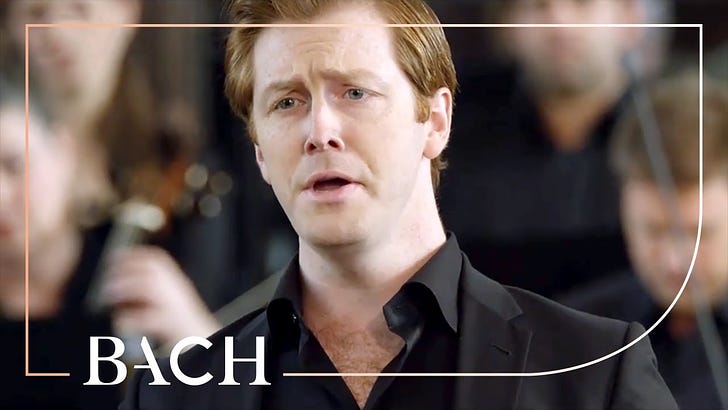While Christmas seems to get all the good popular music, the Lenten/Easter season gets the best classical music.
So let me share!
Ah, Bach!
My favorite music for the season is Bach’s St. Matthew Passion:
The full composition is about 2 hours and 45 minutes, so that may be a bit much.
Worry not – the best musical bit, which is re-used in hymnals throughout Christendom (and yes, we Catholics will “borrow” from the Lutherans … we know good stuff when we hear it), is the Passion Chorale, which appears 5 times in the piece.
Bach did not write the tune. What he did was harmonize it – and harmonize it a different way each time it appeared.
Here is a single setting, sung by the Gesualdo Six, a capella (literally), with words in English:
And here is the chorale, with the original settings from the full work, harmonized four different ways (and yes, it’s in a different key each time):
If you would like to learn more about the St. Matthew Passion, and Bach’s work in general, I highly recommend Prof. Robert Greenberg’s Bach and the High Baroque lectures from the Great Courses (on sale right now!). He has four lectures just on the St. Matthew Passion. And he explains the changes between the different settings of the Passion Chorale.
Yes, I own that lecture set, but it’s also available to many people for free through local library services, such as hoopla, which has the lectures. From my own experience, the audio alone is good enough — you don’t need video.
Haydn – The Seven Last Words of Our Saviour On the Cross
This is purely an orchestral piece, but centered around the “seven last words”, which are as follows, in this order:
1. Luke 23:34: Father, forgive them, for they do not know what they do.
2. Luke 23:43: Truly, I say to you today, you will be with me in paradise.
3. John 19:26–27: Woman, behold your son. Behold your mother.
4. Matthew 27:46 & Mark 15:34 My God, My God, why have you forsaken me?
5. John 19:28: I thirst.
6. John 19:29-30: It is finished.
7. Luke 23:46: Father, into your hands I commit my spirit.
The piece is framed with an opening introductory movement, and a final movement that represents Christ’s death (with an earthquake).
Haydn was Catholic in pre-Vatican II times, so of course, all these were in Latin.
Stabat Mater — Vivaldi and Pergolesi
Stabat Mater is a hymn about Mary’s suffering during the Passion. Various Catholic composers have set this.
One movement from Vivaldi:
One movement from Pergolesi:
Some Last Words from Bishop Fulton Sheen
I just found this, a recording from 1979, from Bp. Fulton Sheen’s last Good Friday homily.
The person who uploaded this obviously did it when YouTube still had a 10-minute limit on videos:
Part 1:
Part 2:
Part 3:
Part 4:
Part 5:
Fulton Sheen died on December 9, 1979.



